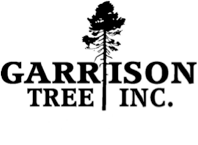Here is your foolproof landscaping care calendar for the entire year. From pruning to preparing, we have it all right here in one place for you. And of course, it's based on our Hudson Valley, NY weather.
January
Take care of any tree removals. Removing the trees while the ground is frozen minimizes the impact and potential damage to sensitive areas of gardens and lawns.
Removal of structurally weak limbs and branches reduces risk and liability.
Prune ornamental and shade trees due to branch stability.
February
Begin ordering spring plants, trees, and shrubs.
Prune fruit trees to enhance fruit production. Continue to prune dormant ornamental and shade trees.
March
Begin spring liquid fertilization program that will promote new growth and enhance production.
Horticultural oil spray should be applied to help control insects before they hatch.
Prune and repair winter damaged trees and shrubs.
Complete dormant pruning of ornamental and shade trees.
Remove all protective coverings and winter mulch.
Schedule an appointment to review plant health care issues.
April
Continue spring fertilization program and continue horticultural oil programs.
Start foliar fungicide programs.
Plan and prepare your spring garden and consider mulching to retain moisture and inhibit weed growth.
Begin planting and transplanting once the ground is thawed.
May
Continue spring fertilization program and continue to plant and transplant.
Consider a tick management program to minimize Lyme disease. This is especially a great idea if you’re planning a big event at your home or having small children or pets. Manage insect and disease activity!
June
Implement a watering system for all plants.
Continue preventing insect and disease activity during this very active time.
Be careful not to wound trees with lawnmowers or trimmers.
Prune hedges after new growth has appeared and prune spring flowering shrubs (pruning after the flower encourages maximum growth for the following year).
July
Spraying and other control methods should be used against Japanese beetles.
Dead head flowering shrubs and rose bushes to promote continual blooms.
Implement a watering program (if you haven’t yet) for your plant material.
August
Look for early fall color as it’s an indicator of plant stress.
Schedule fall planting.
Identify hazardous trees prior to the windy season.
Continue to prune ornamentals, shade trees, and shrubs.
September
Inspect trees for premature leaf drop.
Start liquid fertilization of shrubs and trees.
Consider deer protection.
Begin fall cleanup!
October
Make sure that branches are clear of power and telephone lines before the severe winter weather arrives (don’t deal with power lines on your own!).
Prune, brace, and cable trees to prevent winter damage.
Plant and transplant new trees and shrubs.
Continue fall fertilization program.
November
Mulch evergreens before the ground freezes.
Check for signs of potentially hazardous trees; look for heavy deadwood, cavities, and exposed roots.
Implement winter protection program.
Begin dormant pruning.
Vapor guard (anti-desiccant) for winter.
December
Keep salt away from plants and planting beds.
Protects plants and shrubs with burlap screens.
Remove dead and damaged limbs from trees with maintenance pruning. P
rune ornamental and shade trees to prevent storm damage.

